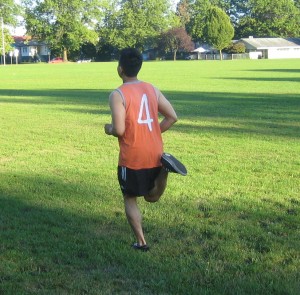A tendon starts at the end of a muscle and attaches it to a bone in order to facilitate movement. Tendons are comprised of durable, fiber-like tissue that has limited stretching capability but are prone to acute and chronic injuries. Conditions that affect the leg tendons can lead to varying degrees of pain and physical incapacity depending on the location and severity of the abnormality. In similar cases, the nature and severity of the condition can be used to determine the suitable course of treatment.
Achilles tendinosis and tendinitis
The Achilles tendon which is positioned on the rear part of the ankle and lower leg attaches the large-sized calf muscles to the calcaneus or heel bone. Abrupt or constant strain on the Achilles tendon can damage the fibers, thus resulting to pain.
Tendinitis is an acute injury on the tendon fibers. If subjected to continuous strain, the issue can progress into a chronic condition called as tendinosis. Even though the doctor can differentiate between tendinosis and tendinitis, many refer to both conditions as tendinitis.

Both Achilles tendinosis and tendinitis can develop at the area where the tendon connects to the heel bone or in the middle part of the tendon. Take note that both conditions can lead to swelling, tendon stiffness and localized that increases with activity. Adequate rest, anti-inflammatory medications, corticosteroid injections, braces, shoe inserts and physical therapy have been the proven treatment options for managing Achilles tendinosis and tendinitis. In uncommon cases, surgery might be needed to minimize the strain on the Achilles tendon.
Quadriceps tendon tear
The quadriceps tendon connects the strong quadriceps muscles of the thigh to the upper end of the patella. The external force that overwhelms the stretching capacity of the tendon can result to a full or incomplete tear of the fibers.
A full tear or rupture on the quadriceps tendon can lead to inability to straighten out the leg at the knee and evident instability of the joint. As for incomplete tears, they respond well to immobilization of the joint using a brace, thus allowing the healing of the tendon fibers. Rupture of this tendon requires surgical intervention and a recovery period for 46 months or longer.
Patellar tendinosis and tendinitis
The patellar tendon attaches the patella to the big bone of the tibia. This tendon might end up with acute or chronic injury that is typically linked with activities that place substantial stress on the ankle, specifically sports that involve jumping or abrupt stops or starts. Running long distances can also lead to injury to the patella. An abrupt increase in the intensity in athletic training can often precipitate a patellar tendon injury.
Patellar tendinosis and tendinitis can often cause pain below the kneecap that becomes intense during activities that involves the knee. After some time, an injury to the patellar tendon that is not treated can result to persistent aching pain. In most cases, stiffness of the knee is common. The treatment options for patellar tendinitis and tendinosis are strikingly similar to those used for managing Achilles tendon injuries.
